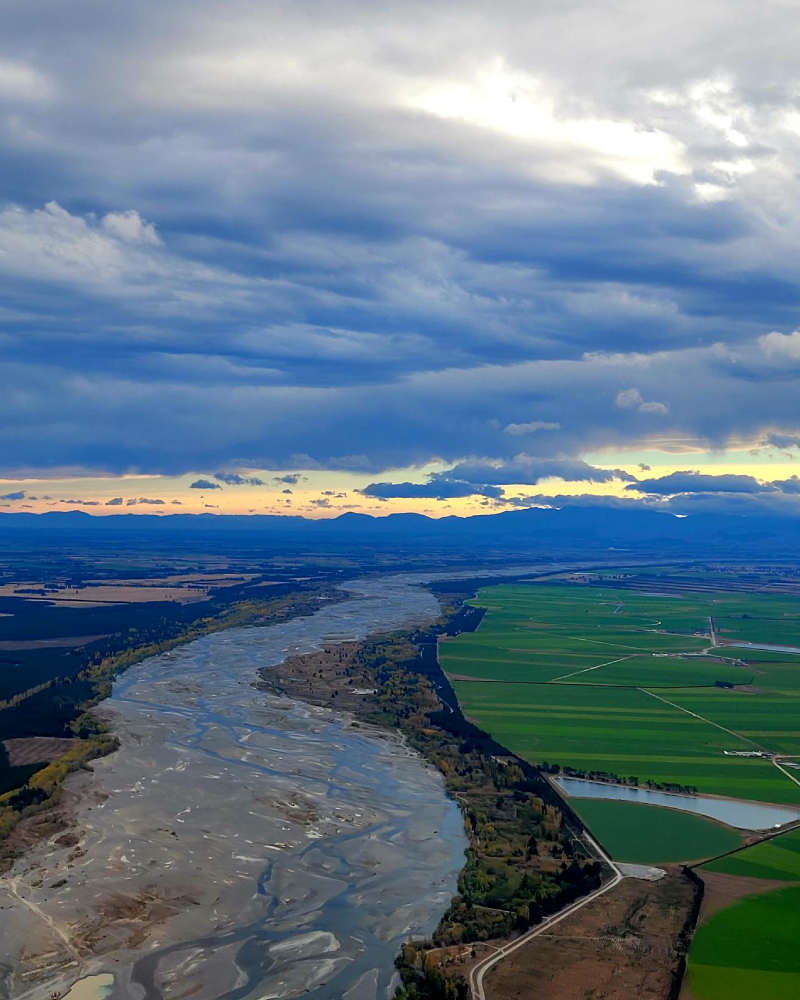We got off lightly, this time
The 2024/25 irrigation season started off looking like we may have been heading into a drought, with November standing out as having above-average temperatures and rainfall well below average. This changed around Christmas/ New Year (as anyone who tried to have a summer holiday in Canterbury will know) with a period of above-average rainfall. February was dry but near average temperatures meant that evapotranspiration wasn’t excessively high, March/ April have been back to above-average rainfall.
On the supply side of the equation, we headed into summer with groundwater levels below average in many parts of Canterbury, which resulted in constrained supplies for some water users with resource consent conditions linked to groundwater levels at the beginning of the season (and potentially also for others with insufficiently deep wells). Lowland streams that are dependent on groundwater were flowing at lower-than-normal levels, and foothills-fed rivers were low.

While Canterbury has avoided drought this time round, it’s worth considering the difference between types of drought, and how irrigation and water storage fits into the picture. Irrigation prevents meteorological drought (lack of rainfall) becoming agricultural drought (excessive soil moisture deficit), but this depends on us not experiencing a hydrological drought (low river flows and / or groundwater levels) at the same time. The severity of an agricultural drought depends on how it impacts on farm production, so in a region like Canterbury that has a high proportion of irrigation-dependent land uses, the consequences of a hydrological drought coinciding with meteorological drought can be severe.
In Canterbury we are fortunate to have most of our irrigation water supplied from the alpine rivers or groundwater. The alpine rivers’ flows are driven by the climate further west and are often flowing high when we have dry conditions on the Plains. Groundwater levels on the Plains are for the most part driven by recharge from the land surface and rivers in the previous year(s), offering some degree of resilience to climate variability.
Irrigation schemes and water storage are engineered solutions to get us through the times when both the climate and hydrology refuse to cooperate and the different types of drought coincide. Water storage is the engineering solution that can get us through years when hydrological drought occurs at the same time as meteorological drought — i.e., when the water isn’t naturally in the right place at the right time.
There are several years in the historic record when water storage would have been essential to prevent severe (long duration) agricultural drought occurring in Canterbury if the current level of irrigation development had existed. This may happen more frequently in the future with a changing and more variable climate. We also cannot rule out future changes to water allocation rules perhaps making surface water and groundwater supplies less reliable than they are now.
It’s tempting to think that scheme and on-farm storage in Canterbury has set us up well for future droughts. However, in many cases the volumes of stored water (per irrigated hectare) that have been developed are more suitable for buffering short-term variability in supply rather than getting through a period of severe drought. Creating resilience to drought is an ongoing challenge that is likely to involve a combination of factors, including large-scale community water storage development, efficient distribution, on-farm irrigation systems and potentially land-use change.

